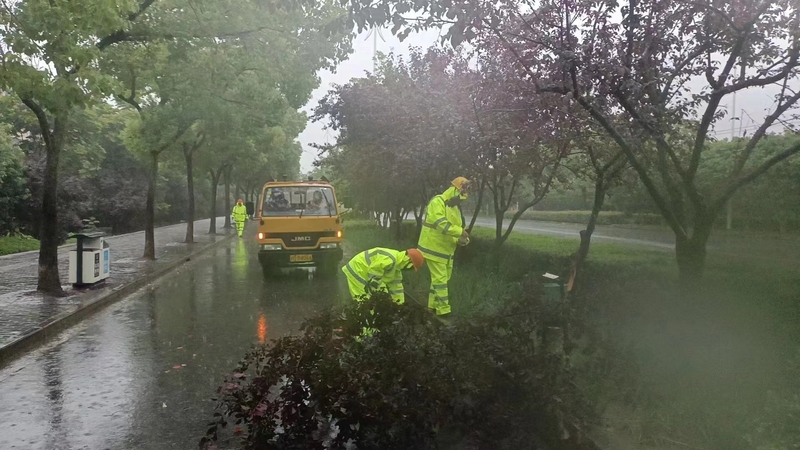But planting local plants may not necessarily attract bees and butterflies. More and more gardens in Shanghai are losing their craftsmanship and becoming more vibrant. The city | plants | vitality
On the side of Xinjing Port, there is a triangular area of over 700 square meters in the Xinjing Garden community. There is an abandoned power pole and a lot of weeds that hide dirt and grime in the area... This once neglected "corner material" completed its transformation in May this year, becoming a butterfly themed habitat garden.
As Zhang Shenghua, a resident committee official, smiled and said, "I haven't seen so many butterflies in years!"
On one side of the inner ring elevated road, more than ten kilometers away, Xie Yafen occasionally looks out at the terrace outside the office. This spring's busyness has paid off: Aristolochia attracts red pearl phoenix butterflies, jade belt phoenix butterflies dance gracefully near citrus and bamboo leaf Sichuan pepper, and bird nests built by white headed bulbulbulbuls on Changshan in Haizhou.
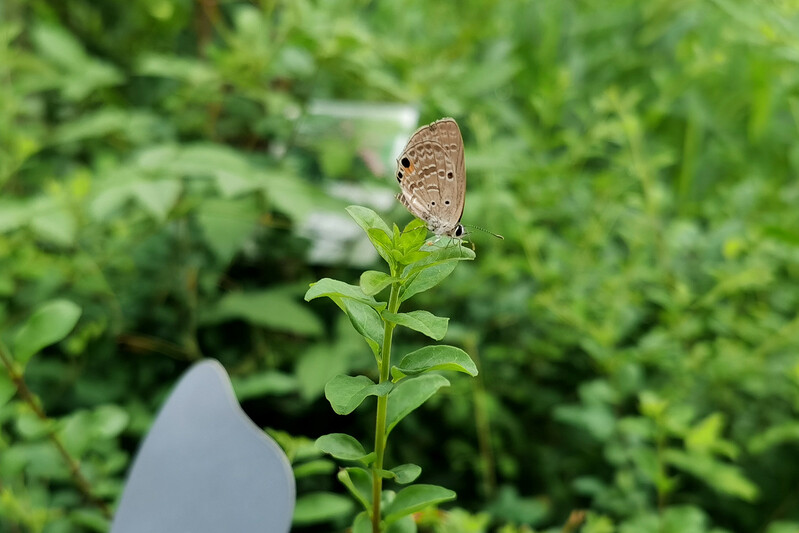
Looking at the over 30 garden species recorded on her phone, she felt very happy and said, "They all flew over from nearby green spaces. It seems that our garden is more charming!"
In recent years, more and more green spaces and gardens in Shanghai have changed their focus from pursuing exquisite and elegant craftsmanship. They would rather sacrifice some landscape effects than pursue local and wild charm and biodiversity. This not only provides people with a natural space at their doorstep to heal their tired bodies and minds, but also allows wild animals in the city to find a place to rest and rest.
The butterflies in Zhongjing Habitat Garden, from planting "matching" plants to appearing, only took a month or so for Chen Xi to take a stunning photo

The bird's nest in the rooftop garden, for some reason, was about to be built when the white headed bulbul gave up and flew away. The interviewee provided
Get wild
"There is a primitive and barbaric beauty, unfamiliar but beautiful." Recently, many people who have been to glass museums have made similar evaluations.
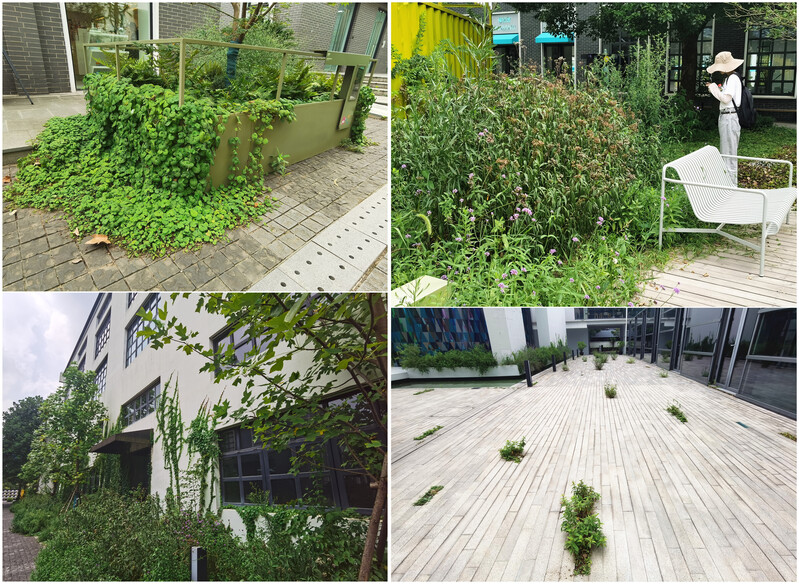
The reason why the avant-garde and fashionable glass museum's art style has undergone a sudden change is due to an experiment that started last year: returning outdoor landscape nodes, brick cracks, tree nests, pond banks and other spaces to nature, replacing previous horticultural landscape flowers and plants with local wild flowers and plants, and not intervening in them unless necessary, except for regular watering.
Fifty or sixty types of local plants grow wildly in dozens of "experimental fields" covering an area of over 1500 square meters. In just a few months, wild roses have climbed over the back of artistic installations, and the green umbrellas "carpets" woven with blood activating pills seamlessly connect with wooden boardwalks and cement floors. Peony, verbena, Platycodon grandiflorus, Shegan, and Lycoris compete for beauty. The Glass Museum has thoughtfully erected dozens of science popularization exhibition cabinets, and tourists who are amazed by the unnamed wild flowers compare the simulated local plant glass products inside each cabinet to know their "names" and basic information.
"Traditional exhibition forms have a strong sense of boundaries and lack connection with nature." Zhang Lin, the director of the Shanghai Glass Museum, said that it is meaningful to make the exhibition space "wild": the roles and functions of exhibits and local plants are exchanged, local plants become the protagonist, and exhibits become the accompaniment of local plants, using innovative ways to play the role of natural science popularization.

The outdoor exhibition area of the Shanghai Glass Museum, with a strong "wilderness wind", is captured by Chen Xi, a butterfly on a peony tree
"The weeds and flowers that play an important role in the ecological environment are often those with no distinctive features," said Zhang Mengyi, an ecological landscape designer at the Urban Wilderness Studio. Only by making local plants the protagonist can more people understand their importance, and then think about whether the traditional approach to urban greening has gone astray - focusing more on aesthetics, rarity, and a sense of "neat and uniform" order, rather than ecological value.
The popularity of palm plants and large lawns is a typical example.

Palm plants are mainly produced in Southeast Asian countries and southern regions of China. They come to high latitude cities as "pet landscapes" and find it difficult to adapt to cold climates and adapt to harsh conditions. They require a large amount of manpower and material resources to maintain their lives, making little contribution to the local biodiversity of these cities.
In order to meet people's various needs such as walking and camping, large lawns frequently undergo high-intensity maintenance and management such as weed and insect removal, becoming a "green desert". The food and habitat space that can be provided to local animals are very limited.
Zhang Mengyi introduced that Urban Wilderness Studio has completed or is currently promoting 10 related projects in Shanghai, mainly attracting the types and quantities of wild animals through local plants to demonstrate their ecological value. "Some plants and animals are relatively 'bound', and through continuous observation and research, it can be concluded that 'attracting bees and butterflies' is a more efficient and effective combination of local plants, which is more conducive to replication and promotion in urban green spaces and gardens."

For example, Aristolochia is the host plant of various butterfly species such as the red pearl butterfly and ribbon butterfly. For example, plants in the Violaceae family, such as the three colored viola, are the favorite of the leopard butterfly. The red chested flat horned Chinese zodiac leaf beetle feeds on the strong jasmine fragrance of the Chinese wolfberry. The small strawberries that grow in late spring and early summer are a favorite food for many birds and insects.
In Zhongjing Habitat Garden, habitat builders and resident volunteers carefully prepared four habitat flower beds in spring, summer, autumn, and winter, striving to provide sufficient food and shelter for butterflies attracted to settle down throughout the year.
Yu Linlin, Senior Manager of the Shanghai Conservation Project of the Nature Conservation Association, introduced that August to November is the flowering period for local plants such as perilla and bulbous kale. After careful cultivation and maintenance, plants in the Asteraceae family such as dandelion and samara can also extend their flowering period to late autumn or even early winter. In addition, some evergreen plants, such as the cabbage butterfly, the red butterfly, and the leopard butterfly, can also see adult butterflies in November without worrying about food.

Chen Xi's stunning photo of the four season flower beds in Zhongjing Habitat Garden
A single tree does not make a forest
Although many local plants can attract bees and butterflies, there is still a lack of research on the proportion of various plants that can produce the best biodiversity effect when these plants are combined, and whether wild animals such as bees and butterflies that attract them will have unpredictable negative effects on each other.
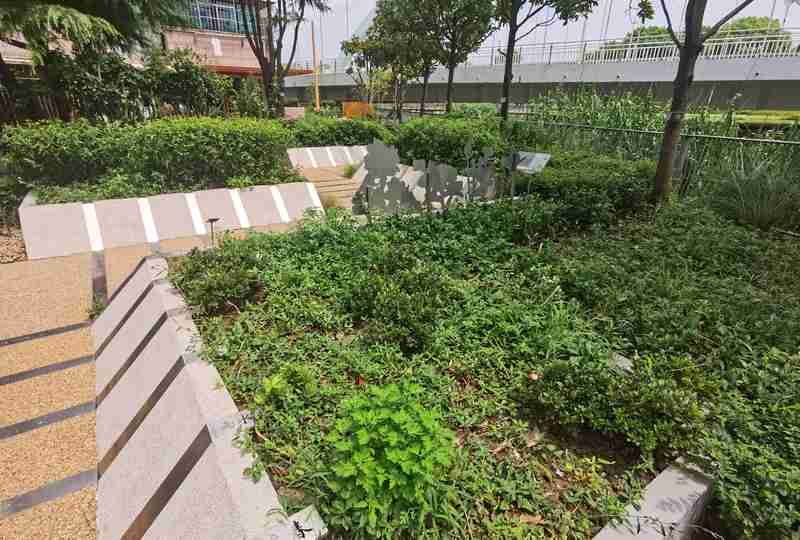
"Many people recognize the allure of Aristolochia to butterflies, but are unaware of the consequences of not planting them well." Guo Taoran, the head of the Urban Wilderness Studio, said that some parks and green spaces want to create "butterfly characteristics" by planting a large number of Aristolochia and introducing butterflies. However, they may soon encounter the dilemma of Aristolochia and butterfly "mass extinction".
This is because the red pearl butterfly larvae have an amazing appetite. If Aristolochia is planted too densely, the eggs laid by the red pearl butterfly will also be concentrated in the Aristolochia planting area, causing the larvae to generally not eat enough and die. A large number of red pearl phoenix butterflies gather and attract natural enemies such as parasitic bees, catching them all in one go.
Only by dispersing Aristolochia and planting it together with other types of plants, guiding the dispersal of eggs or creating certain obstacles for its reproduction, can Aristolochia and Aristolochia maintain a delicate balance, achieve sustainable development, and provide food for birds, weasels, hedgehogs and other animals, steadily improving local biodiversity.
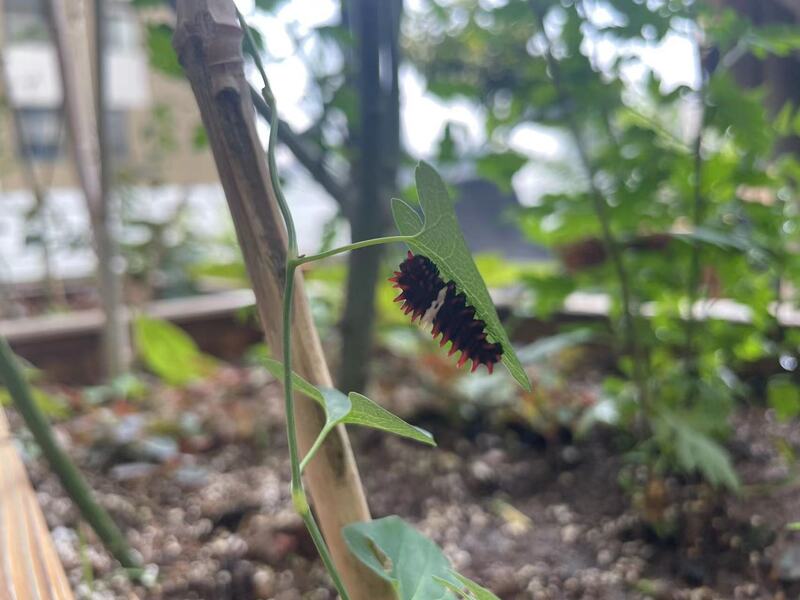
Red pearl butterfly larvae on Aristolochia provided by respondents
Last July, Urban Wilderness Studio, in collaboration with an Earth Nature Foundation, launched the first phase of the Shanghai Pollinated Insect Citizen Science Project. 305 volunteers uploaded more than 8800 ecological photos through life observation software, recorded more than 3600 pollinating insect flower visits in the Shanghai area, and ultimately determined 3089 effective records. More than 90 pollinating insects were detected in 51 families of 71 families and 209 flowering plants.
"We have selected a group of pollinating insect and flowering plant groups that need to be closely monitored. Plants such as Asteraceae, Lamiaceae, and Verbenaceae may play important roles in Shanghai and require further research." Guo Taoran said that many local honey and pollen source plants are currently only "we believe pollinating insects like them." After obtaining more objective and realistic answers in the future, it will provide reference basis for the ecological planning of relevant departments in Shanghai.
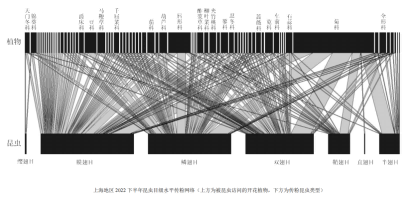
The obstacle of fragmented habitats in image cities to attracting bees and butterflies is also an urgent issue that needs to be addressed.
"If there are few or even no 'indigenous' green spaces or parks within a few kilometers, no matter how good the habitat garden is, it cannot turn into wild animals out of thin air." Chen Qi, the project leader of the Habitat Garden of Chengjiaqiao Street Community Autonomous Office, said that before creating the habitat garden, it is necessary to do homework in advance whether there is a deep biodiversity' family background 'nearby and whether the distance between the two is within the coverage range of the migration ability of wild animals.
Before being transformed into a habitat garden, the activity square in Chengqiao Second Village had a thorough understanding of the surrounding ecological environment. Within a radius of 1 kilometer, there were two major ecological patches: Shanghai Zoo and Xijiao Hotel. The straight-line distance from another planned "Rong" habitat garden did not exceed 500 meters. A small ecological network that mainly serves birds and insects is about to emerge.

The "Memory" habitat garden in Chengqiao Second Village has been replanted with bird loving plants such as Lin Zelan, South Tianzhu, Peony, and Goji bone. There are endless flowers and leaf buds in March and April, and berries and nuts hanging from branches in November and December. In the summer, birds can also eat insects attracted by plants. A resident captured two blackbirds taking showers and eating osmanthus seeds in the stacked pool of the garden this year.
A sub adult bird of the blackbird was captured bathing in a specially designed sink for birds in the "Memory" habitat garden, provided by the Chengjiaqiao Street Community Autonomous Office
The unique natural exploration device in the "Memory" habitat garden is connected to the crown of a tree at the other end of the earpiece. Residents can listen to the calls of birds without disturbing them as much as possible, guess their species based solely on their sounds, and finally walk to the edge of the tree by the side steps to confirm whether the answer is correct. There is also a science popularization sign next to the tree, which is convenient for following the map. The Chengjiaqiao Street Community Autonomous Office provides it
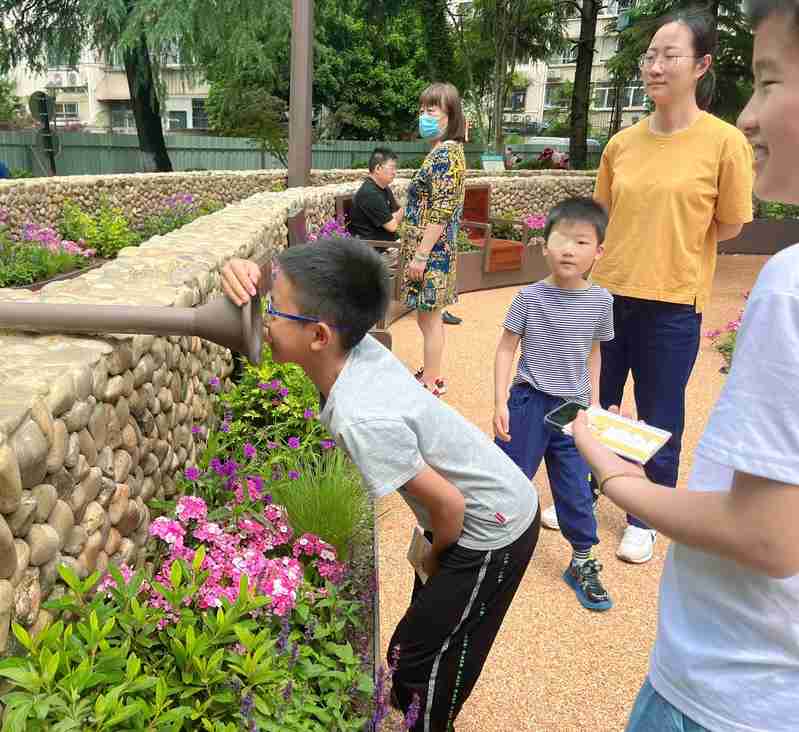
Residents take a walk in the meditation maze of the "Memory" habitat garden. The bottom right corner of the picture is an artificial bird's nest, with the roof covered with succulent plants that birds love. The decoration of the house is determined by the birds themselves. When there is a lack of food sources in winter, volunteers will put nuts, rice, and other food inside the house. Chen Xi takes a stunning photo
As of now, Changning District has built 13 habitat gardens with diverse styles. During the 14th Five Year Plan period, Changning plans to build no less than 30 community level habitat gardens.
"A single tree does not make a forest, and these habitat gardens are also key 'pedals' of the high-density urban biodiversity protection network. When planning and construction, we will consider them comprehensively and no longer' fight alone '. Mao Qin, director of the Changning District Urban Renewal and Low Carbon Project Management Center, introduced that the' Changning District Biodiversity Protection Green Map 'has designated 9 ecological source areas such as Shanghai Zoo and Zhongshan Park, 3 key ecological corridors such as the outer green belt, Suzhou River, and Xinjing Port, 3 main migration paths and several secondary migration paths, as well as 5 types of habitat areas, and combined with community wishes, 22 newly planned habitat garden locations have been designated.".
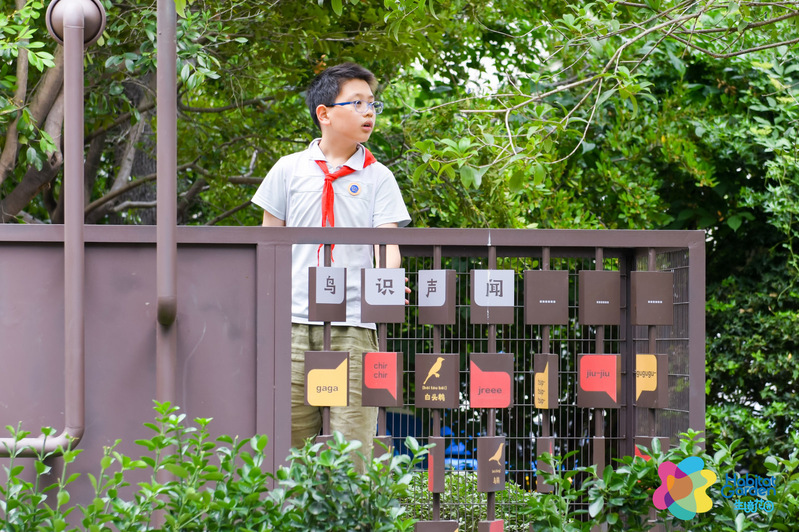
These ecological nodes, patches, and corridors will revitalize the originally fragmented urban habitats, allowing the "indigenous people" within each "ecological island" to freely migrate within the ecological network, select satisfactory habitats, and better reproduce and thrive.
The straight distance between the "Yi" habitat garden in Chengqiao Second Village and the "Rong" habitat garden in Lane 2222 of Hongqiao Road does not exceed 500 meters. The species that the two want to attract are mainly birds and insects, which can be connected into a line to achieve effective linkage in biodiversity. Chen Xi's stunning photo
Chen Xi's stunning photo of butterflies on willow leaved verbena in the "Rong" habitat garden

The children found the foam of cicada larvae on the plants during the night nature guided activities organized by the "Rong" Habitat Garden, provided by Chengjiaqiao Neighborhood Community Autonomous Office
Changning District Biodiversity Conservation Green Map Provided by Changning District Urban Renewal and Low Carbon Project Management Center

